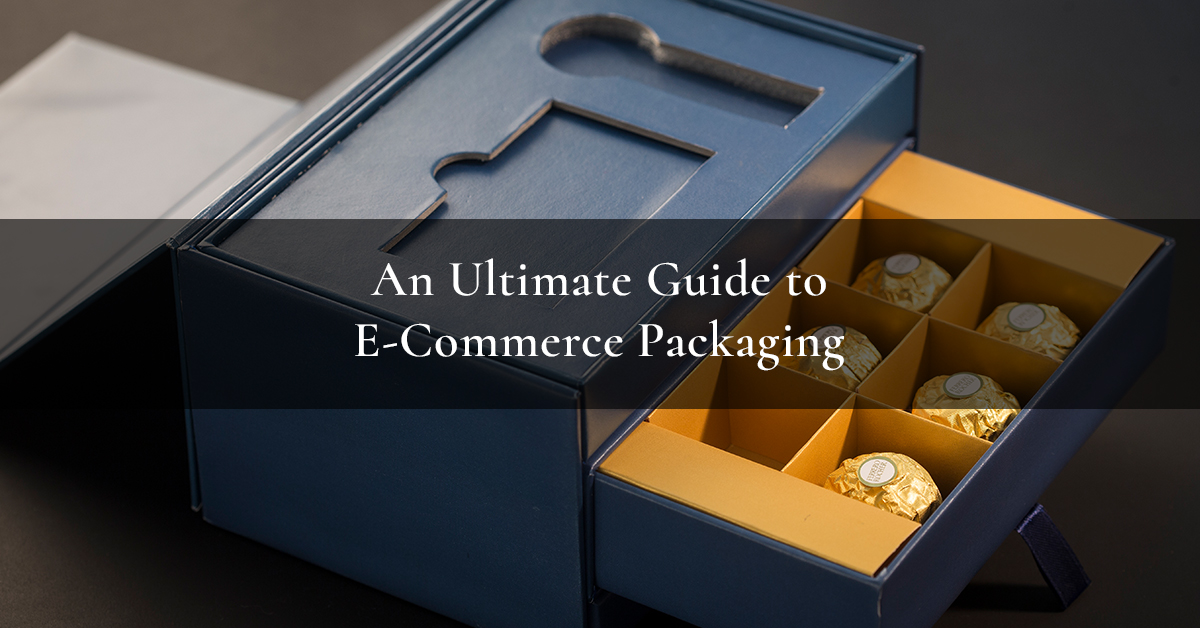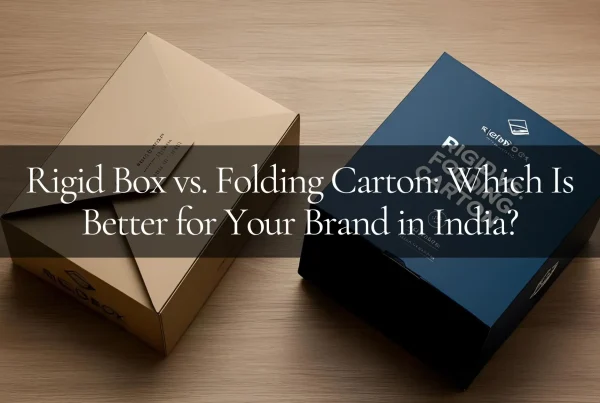In the world of e-commerce, packaging plays a crucial role in both branding and customer experience. The way you package your products can make a significant impact on how customers perceive your brand and how satisfied they are with their purchase.
In this ultimate guide, we will explore the importance of e-commerce packaging, different types of packaging options, sustainable solutions, designing strategies, and cost considerations. So, let’s dive in and discover how to make your e-commerce packaging a standout success!
Understanding the Importance of E-Commerce Packaging
When it comes to e-commerce, packaging is more than just a way to protect your products during shipping. It is a powerful tool for branding and marketing. The right packaging not only creates a positive first impression but also reinforces your brand identity.
Imagine receiving a package in the mail. As you eagerly tear open the box, you are greeted with a beautifully designed package that instantly catches your eye. The colors, the logo, and the overall aesthetic are all carefully crafted to reflect the essence of the brand. This is the power of packaging in e-commerce.
The Role of Packaging in Branding
Your packaging is an extension of your brand. It tells a story, communicates your values, and creates a connection with your customers. Whether it’s through eye-catching designs, unique shapes, or luxurious materials, well-designed packaging can help your brand stand out from the competition and leave a lasting impression.
Consider a company that specializes in eco-friendly products. Their packaging is made from recycled materials and features earthy tones and nature-inspired designs. This not only aligns with their brand values but also appeals to environmentally conscious consumers who are looking for sustainable options.
On the other hand, a high-end fashion brand may opt for sleek and sophisticated packaging that exudes luxury. The use of premium materials, embossed logos, and elegant finishes all contribute to creating a sense of exclusivity and prestige.
How Packaging Impacts Customer Experience
Customer experience is a top priority for any e-commerce business. Packaging plays a vital role in shaping that experience. A well-packaged product not only guarantees its safety during transit but also enhances the unboxing experience for your customers.
Imagine receiving a package that is thoughtfully wrapped with care. As you open it, you find a personalized thank-you note, a small gift, and perhaps even a discount code for your next purchase. This attention to detail creates a memorable and delightful experience for the customer, fostering a sense of loyalty and satisfaction.
Furthermore, packaging can also serve as an opportunity to provide additional information about the product or company. Including a brochure or a QR code that leads to a video demonstration can enhance the customer’s understanding of the product and increase their engagement with the brand.
It’s important to note that packaging goes beyond the physical aspect. In the digital age, social media plays a significant role in shaping consumer behavior. Eye-catching packaging can be shared on social platforms, generating buzz and word-of-mouth marketing for your brand.
In conclusion, packaging is not just a means to an end. It is a strategic tool that can elevate your brand, create a memorable customer experience, and drive customer loyalty. By investing in well-designed and thoughtful packaging, you can make a lasting impression and stand out in the competitive world of e-commerce.
Different Types of E-Commerce Packaging
When it comes to e-commerce packaging, there are several options to choose from. Each type has its advantages and disadvantages, depending on the nature of your products and shipping requirements.
Let’s dive deeper into the world of e-commerce packaging and explore additional options that can enhance your shipping experience.
Mailer Boxes: Pros and Cons
Mailer boxes are sturdy and versatile, making them ideal for protecting fragile items. They can be customized with your brand logo and are excellent for creating a professional and high-end look. The added layer of protection ensures that your products arrive in pristine condition, leaving a positive impression on your customers.
Furthermore, mailer boxes offer ample space for additional packaging materials such as bubble wrap or packing peanuts, providing an extra layer of cushioning for delicate items. This attention to detail can help minimize the risk of damage during transit.
However, it’s important to consider that mailer boxes can be bulkier and more expensive than other packaging options. The additional weight and size may result in higher shipping costs, especially for international shipments.
Therefore, it’s crucial to strike a balance between protection and cost-effectiveness when choosing mailer boxes as your preferred packaging solution.
Poly Mailers: Pros and Cons
Poly mailers are lightweight, cost-effective, and suitable for non-fragile items. They are made from durable polyethylene material that provides resistance against water and tearing, ensuring that your products remain safe during transit.
One of the key advantages of poly mailers is their ability to reduce shipping costs. Due to their lightweight nature, they require less postage compared to bulkier packaging options.
This makes them an attractive choice for businesses looking to minimize expenses without compromising on product protection.
However, it’s important to note that poly mailers may not provide the same level of protection as mailer boxes. While they are suitable for non-fragile items such as clothing or soft goods, they may not be the best option for delicate or valuable products.
It’s crucial to assess the nature of your products and choose packaging that aligns with their specific requirements.
Padded Envelopes: Pros and Cons
Padded envelopes are a popular choice for small, lightweight items. They provide a cushioned layer to protect your products while keeping the packaging slim and efficient. The padded interior helps absorb shocks and impacts during transit, reducing the risk of damage to your items.
These envelopes are not only economical but also easy to handle. Their lightweight design makes them convenient for both shipping and storage. Additionally, padded envelopes are often made from recycled materials, making them an eco-friendly packaging choice.
However, it’s important to consider the size and weight limitations of padded envelopes. While they are suitable for small items, larger or heavier products may require a more robust packaging solution.
It’s crucial to strike a balance between the size of your items and the protective capabilities of padded envelopes.
Remember, choosing the right e-commerce packaging is a crucial aspect of your business’s success. It not only ensures the safe delivery of your products but also leaves a lasting impression on your customers.
By understanding the pros and cons of different packaging options, you can make an informed decision that aligns with your business goals and customer expectations.
Sustainable Packaging Solutions for E-Commerce
In today’s environmentally conscious world, adopting sustainable packaging practices is not just a trend but a necessity. By choosing eco-friendly packaging materials, you can reduce your carbon footprint and appeal to eco-conscious consumers.
When it comes to sustainable packaging solutions for e-commerce, there are various options to consider. One of the most popular choices is biodegradable packaging materials.
These materials, such as compostable paper or plant-based plastics, break down naturally and do not harm the environment. By using these materials, you can ensure that your packaging leaves minimal impact on the planet.
Biodegradable packaging materials offer several benefits. Firstly, they reduce the amount of waste that ends up in landfills. Traditional packaging materials, such as plastic, can take hundreds of years to decompose, contributing to the growing problem of waste accumulation.
By switching to biodegradable options, you can help combat this issue.
Additionally, biodegradable packaging materials are often made from renewable resources. For example, compostable paper is derived from sustainably managed forests, ensuring that the production process does not contribute to deforestation.
By using such materials, you support responsible sourcing practices and help preserve our natural resources.
Recyclable Packaging Options
Recyclable packaging is another excellent choice for sustainable e-commerce. Opt for packaging materials, such as cardboard or paper, which can be easily recycled by your customers. Encourage them to recycle the packaging and educate them on the benefits of doing so.
When customers recycle packaging materials, they contribute to the circular economy. The circular economy aims to minimize waste and maximize the value of resources by keeping materials in use for as long as possible.
By using recyclable packaging options, you support this concept and help create a more sustainable future.
Furthermore, recycling packaging materials reduces the demand for virgin materials. For instance, when cardboard is recycled, it can be used to make new packaging or other paper products, reducing the need for cutting down additional trees.
This helps conserve natural resources and reduces the environmental impact of packaging production.
It is essential to educate your customers about the recyclability of your packaging materials. Include clear instructions on how to recycle the packaging and highlight the positive environmental impact of their actions.
By doing so, you empower your customers to make eco-friendly choices and contribute to a greener world.
Designing Your E-Commerce Packaging
Designing your e-commerce packaging is an opportunity to create a visual identity that reflects your brand and attracts customers. When designing, consider the following:
Incorporating Brand Elements into Packaging
Your packaging should be an extension of your brand, reinforcing your identity and values. Incorporate your logo, color palette, and brand messaging into the design to create a cohesive and recognizable packaging.
Choosing the Right Colors and Fonts for Your Packaging
The choice of colors and fonts can greatly impact the perception and appeal of your packaging. Select colors that represent your brand personality and evoke the desired emotions in your customers. Opt for legible fonts that match your brand’s style and enhance readability.
Cost Considerations in E-Commerce Packaging
While creating a visually stunning packaging is important, it’s also essential to keep costs in mind. Balancing quality and cost is key to ensuring profitability.
Balancing Quality and Cost
It’s crucial to find a balance between the quality of your packaging materials and the cost involved. Consider the durability and protection required for your products while exploring cost-effective options. Conduct thorough research and negotiate with suppliers to get the best possible pricing.
Bulk Purchasing to Save on Packaging Costs
Purchasing packaging materials in bulk can help you save money in the long run. Suppliers often offer discounts for larger quantities. Plan ahead, forecast your packaging needs, and order in larger quantities to take advantage of bulk pricing.
By understanding the importance of e-commerce packaging, exploring different packaging options, embracing sustainability, designing strategically, and considering cost factors, you can create a packaging strategy that not only protects your products but also leaves a lasting positive impression on your customers.
Remember, e-commerce packaging is not just a means to an end, but an opportunity to showcase your brand and enhance the overall shopping experience.




